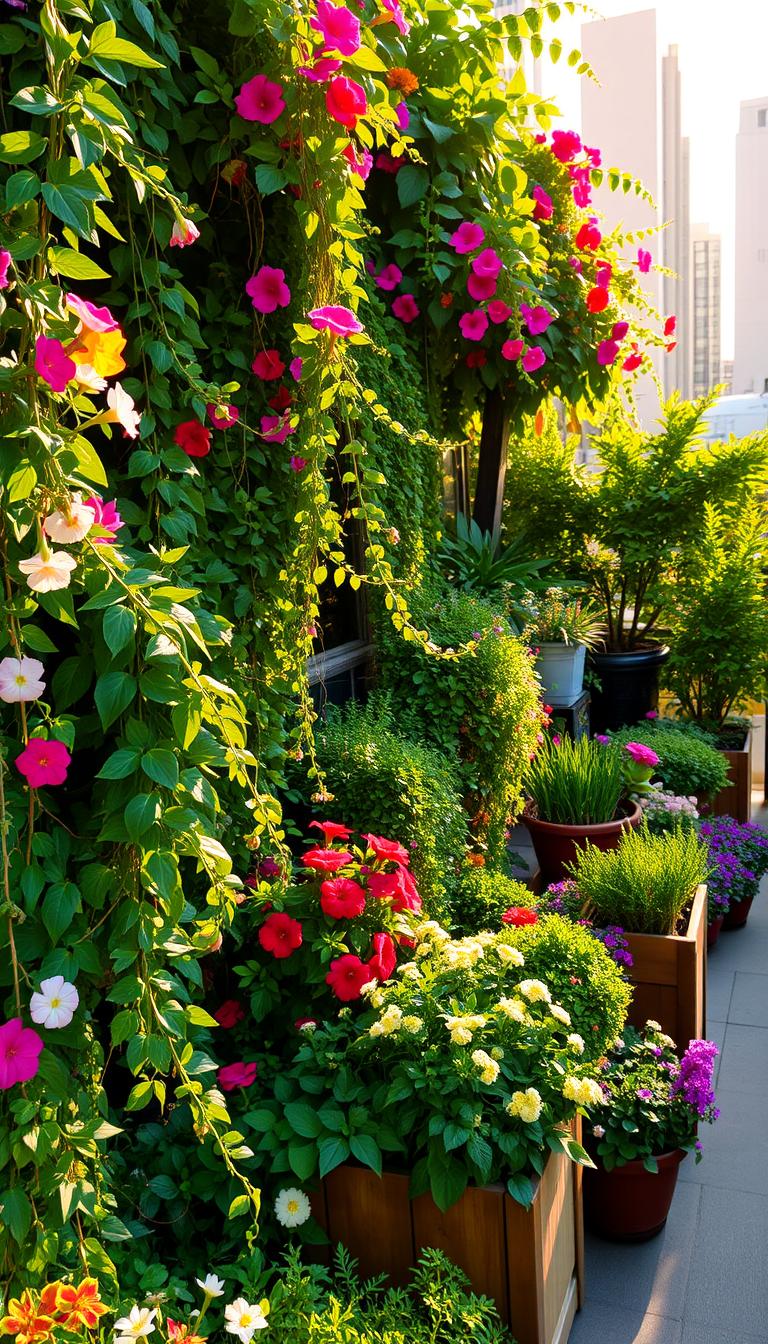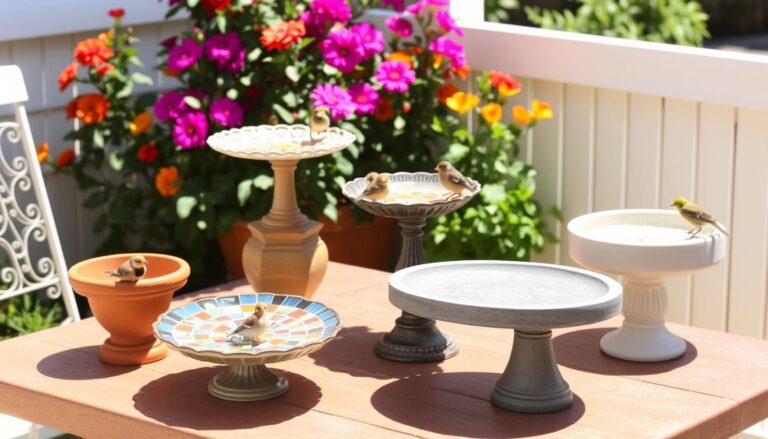How to Choose the Right Deck Stain Color for Your Home: Tips & Tricks
Did you know 72% of homeowners prioritize UV protection when selecting a deck stain? A fresh coat does more than refresh your outdoor space—it shields wood from harsh weather, fading, and wear. Whether you’re revitalizing an old deck or staining a new one, the right choice blends beauty with durability.
Your deck is an extension of your home, so harmony matters. The process involves identifying wood type, selecting opacity, and testing colors before application. Climate plays a role too—humid areas like Virginia benefit from mold-resistant formulas.
From rustic cedar to modern gray tones, your stain should reflect personal style while complementing your home’s architecture. A well-chosen color transforms wood into a lasting centerpiece.
Key Takeaways
- UV protection is a top priority for most homeowners.
- Stain selection balances aesthetics with wood preservation.
- Climate influences color longevity and formula needs.
- Testing samples ensures the perfect match.
- Architectural harmony enhances curb appeal.
Understanding Your Deck’s Wood Type
Not all woods absorb stain the same way—knowing yours matters. The right stain enhances natural beauty while protecting against weather. Start by identifying your deck’s material to avoid costly mismatches.
Common Wood Types for Decks
Redwood stands out for stability, lacking resins that repel stain. Cedar, though insect-resistant, absorbs unevenly due to its soft texture. Pressure-treated lumber is budget-friendly but prone to warping, while hardwoods like ipe demand extra prep work.
How Wood Type Affects Stain Absorption
Dense woods like mahogany resist penetration, favoring transparent stains. Redwood holds color 30% longer than cedar, thanks to its tight wood grain. For porous pine, semi-solid formulas prevent blotching.
Best Stain Types for Different Woods
Match opacity to your deck’s needs. Hardwoods shine with clear finishes, while softwoods benefit from semi-transparent options. Composite materials require solid stains for adhesion. Avoid oil-based formulas on teak—its natural oils clash with water-based products.
Explore deck stain color ideas to visualize how tones interact with your wood type. Testing samples ensures harmony between your home’s exterior and the finish.
How to Choose the Right Deck Stain Color for Your Home
Your home’s exterior tells a story—make sure your deck adds the perfect chapter. The ideal stain color bridges aesthetics and environment, creating a seamless flow between architecture and nature.
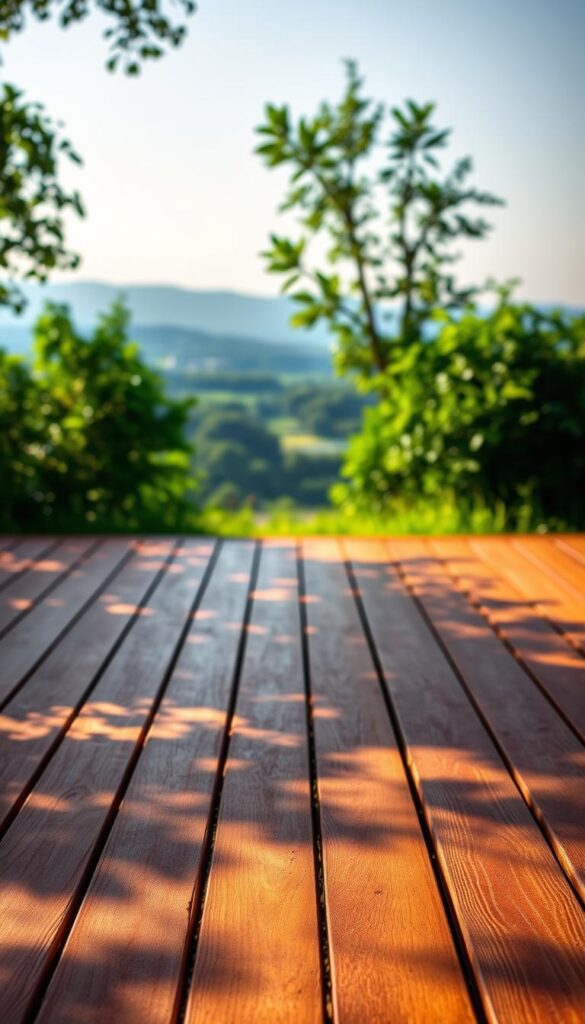
Matching Your Home’s Exterior Palette
58% of homeowners prefer decks that echo their trim color. Follow the 60-30-10 design rule: 60% dominant hue (your siding), 30% secondary (trim), and 10% accent (the deck stain). Warm cedar tones offset cool north-facing shadows, while coastal homes shine with driftwood grays.
Considering Surroundings and Landscaping
Red or orange stains pop against green foliage, per color wheel principles. Urban settings? Neutral tones modernize concrete backdrops. Observe how light shifts across your outdoor space—morning sun intensifies yellows; dusk softens grays.
Testing Stain Samples Before Committing
Apply samples to actual wood, not just boards. Benjamin Moore’s app helps visualize options, but real-world tests reveal truth. Check colors at dawn, noon, and dusk over 72 hours. Pro tip: Shadows alter perceptions—view samples where your deck gets the most foot traffic.
Exploring Popular Deck Stain Colors
Gray decks now rival traditional browns, reflecting a 40% surge in popularity since 2020. Whether you lean toward earthy warmth or contemporary coolness, stain colors set the mood. Your choice should balance trends with timeless beauty.
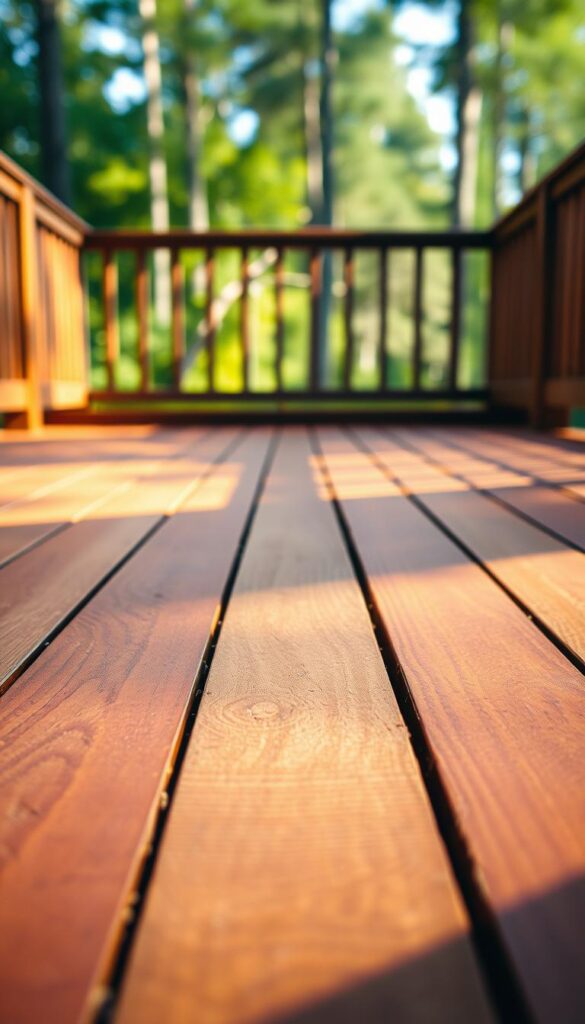
Natural Wood Tones and Their Appeal
Golden cedar complements Craftsman homes, while redwood’s russet undertones suit Tudor styles. These shades highlight wood grain, creating organic harmony. Semi-transparent stains work best here, enhancing texture without masking it.
Neutral Colors for Timeless Elegance
Behr’s TUGBOAT—2024’s Color of the Year—offers a soft gray perfect for modern farmhouses. Neutrals like wheat or slate hide dirt well and pair effortlessly with any exterior. For depth, try a two-tone look: navy borders with a neutral field.
Bold Hues for a Statement Look
Blue deck stain colors reduce perceived heat in sunny yards, a clever trick for Southern climates. Deep ebony hides pollen but demands annual resealing. Remember: bold doesn’t mean brash. Test samples to ensure the color feels intentional, not overwhelming.
Opacity Levels: From Transparent to Solid Stains
Opacity determines both beauty and durability—pick wisely. The right balance lets wood grain shine while offering protection against wear. Whether you prefer subtlety or full coverage, each level serves distinct needs.
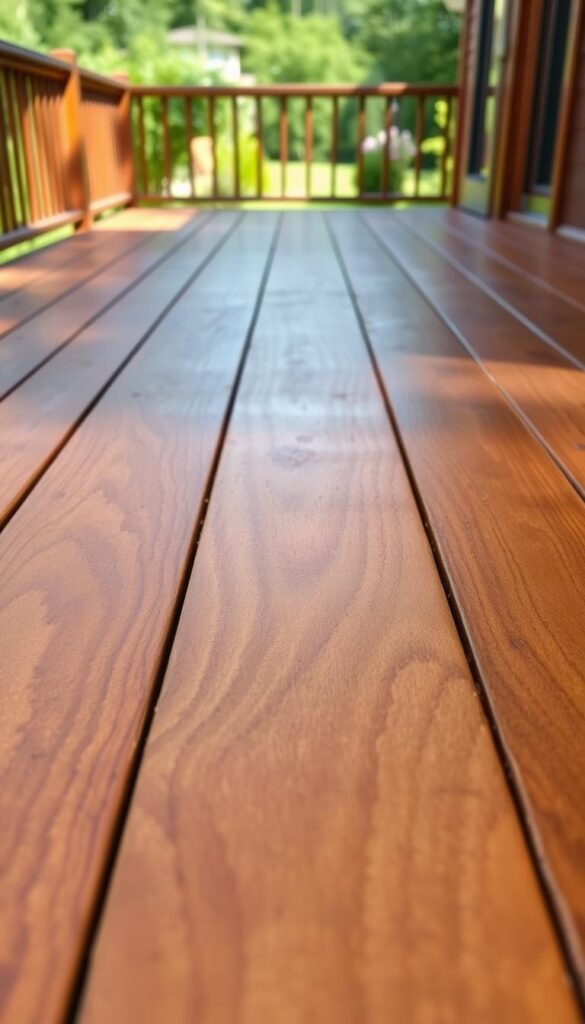
Clear and Translucent Stains
These let the wood’s character take center stage. Ideal for new or well-maintained decks, transparent options last 1–2 years. They block 60% of UV rays but require frequent reapplication.
Water-based versions dry in 6 hours—oil-based need 24. Redwood and cedar benefit most, as their natural patterns stay visible.
Semi-Transparent and Semi-Solid Options
A middle ground for opacity and protection. Semi-transparent hides 80% of flaws while preserving texture. It blocks 90% of UV rays, outperforming clear stains.
Hybrids like Cabot’s Australian Timber Oil penetrate deeply. Use 0.25 gallons per square foot for even coverage on porous woods.
Solid Stains for Maximum Coverage
Think of these as paint’s cousin. Solid stains mask imperfections entirely and last 4–5 years. They demand 0.33 gallons per square foot but resist fading in harsh climates.
Note: Switching from solid to transparent requires stripping—a 3-step chemical process. Plan your long-term vision before committing.
Practical Tips for Staining Your Deck
A well-stained deck combines artistry with science—master both for lasting results. Whether refreshing old wood or sealing new planks, these steps ensure color stays vibrant and protection endures.
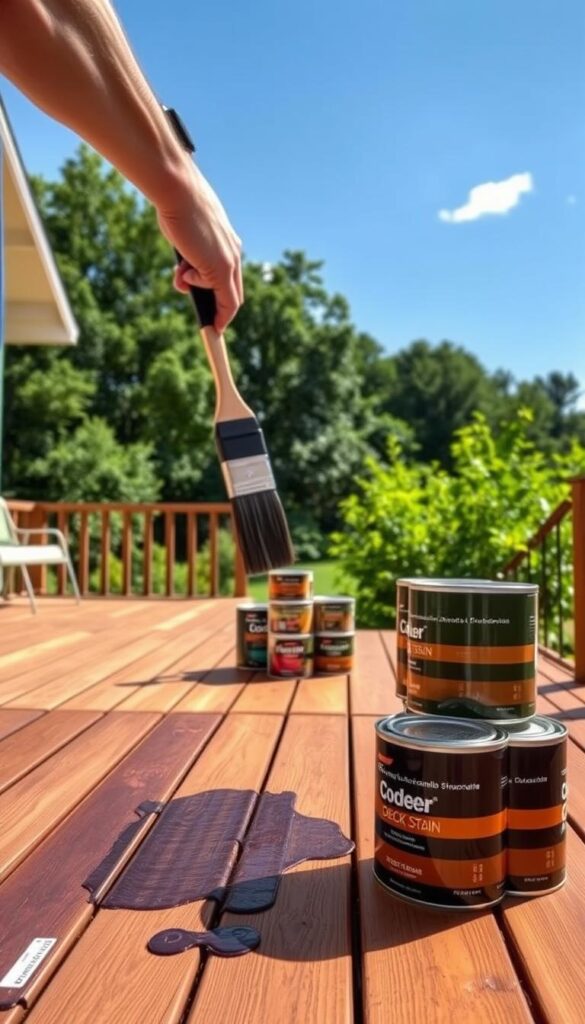
Preparing the Deck Surface
Start with a gentle yet thorough clean. Pressure washing at 500-600 PSI lifts dirt without damaging wood. Let the surface dry 48 hours—moisture trapped beneath stain causes peeling.
Run the “sock test”: Drag a cotton sock across the planks. If it snags, sand those areas smooth. For cracks, fill with Abatron WoodEpox before applying any finish.
Applying Stain for Even Coverage
Purdy XL brushes speed up the job by 35%. Work in 4’x4’ sections using back-and-forth strokes, following the grain. Ideal conditions? 50-90°F with under 85% humidity.
Too thick a coat leads to sticky residue. Too thin won’t shield against weather. Aim for the consistency of melted ice cream—smooth but not runny.
Maintenance to Extend Stain Life
Twice-yearly cleaning with OxiClean Deck Wash prevents mold buildup. Reapply stain every 2-3 years for opaque finishes, 4-5 for transparent ones.
Note shaded areas—they degrade slower but trap moisture. Inspect after heavy storms; early touch-ups save time and money in home improvement projects.
Conclusion
A well-chosen stain blends protection with personality, creating lasting outdoor appeal. Consider wood type (30% impact), local climate (25%), and personal style (20%)—these factors determine 75% of your deck’s final look and longevity.
Smart choices pay off. Properly maintained deck stain recovers 75% of costs at resale, per Remodeling Magazine. For historic homes or composite materials, professional guidance ensures optimal results.
Test samples with Aboff’s Paint Pods—observe them at different times. Quality application matters as much as the color itself. Your deck deserves both beauty and resilience.

